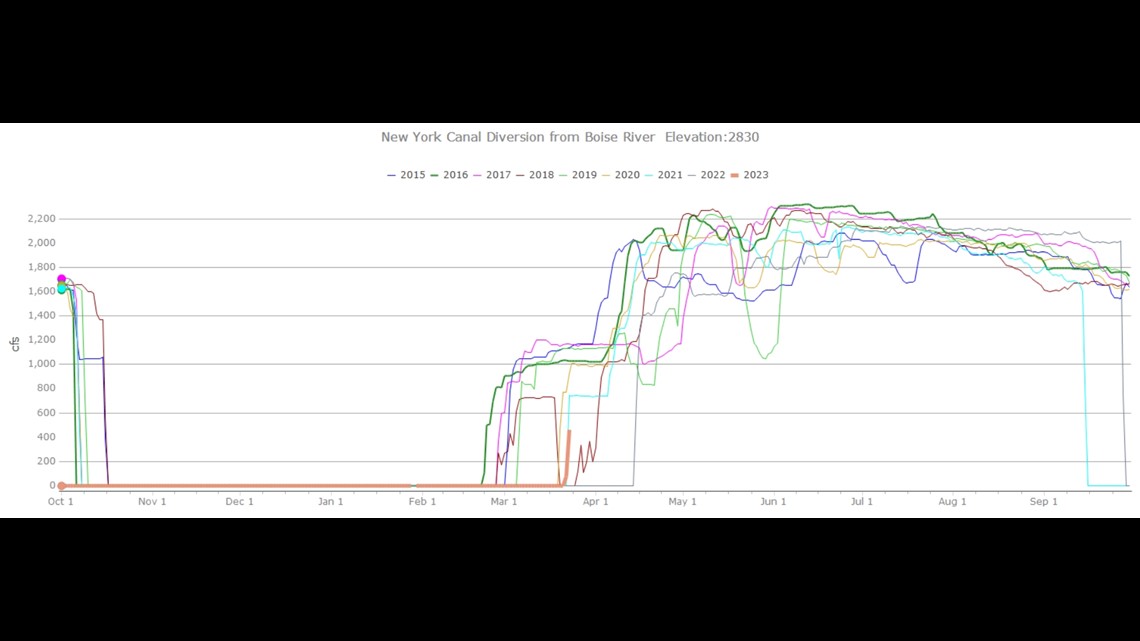BOISE, Idaho — The Boise Project Board of Control began diverting water into the New York Canal on Wednesday, March 22, in order to start filling Lake Lowell.
The canal diversion started earlier than last year's late start, as shown in the graph below.


"The Boise Board of Control operates the New York Canal kind of like we do the the reservoir systems," Water Operations Lead for the U.S. Bureau of Reclamation Ryan Hedrick said. "They pull water into their reservoir to fill it up, and then they use that throughout the irrigation season to deliver water. They'll deliver it directly from the New York Canal, but they also deliver from Lake Lowell."
Hedrick said so far, it appears that the Treasure Valley should have an adequate reservoir supply of water this year.
The Boise Project Board of Control started moving water down in order to start filling Lake Lowell - an off-site reservoir that only the New York Canal fills.
In general, water managers have to be strategic on when and how they release water, because once they move it downstream - water can't be moved back up. The Bureau of Reclamation operates Boise reservoirs.
"If you go to Lucky Peak out a couple miles, there's a diversion dam there, and it backs the water up into a pool and then that pool is able to feed the New York Canal," Hedrick said. "So, they tell us, 'we'd like to start filling the canal and moving water.' So, we fill that pool behind the Boise River Diversion Dam, and then water is able to be delivered."
As irrigation canals across the Treasure Valley begin to fill with water, this time of year also serves as a reminder that it's dangerous to swim in canals.
"A lot of them are concrete-lined and and once you get in them, there's no way to crawl out," Hedrick said. "They're moving a lot quicker than you would think. It doesn't look like it's very fast, but the New York Canal can run anywhere from 1,800 to 2,000 CFS (cubic feet per second). It's a lot of water in a small, confined channel."
In a press release, the US Army Corps of Engineers said that Boise River flows are likely to increase the first week of April. The Boise basin snowpack was at 128% of the median as of March 21, so water released is needed to reduce the risk of flooding later in spring.
As of Wednesday, Boise River reservoirs were at 63% of capacity. The US Army Corps of Engineers said a full supply of irrigation water is expected this summer.
Watch more Local News:
See the latest news from around the Treasure Valley and the Gem State in our YouTube playlist:

